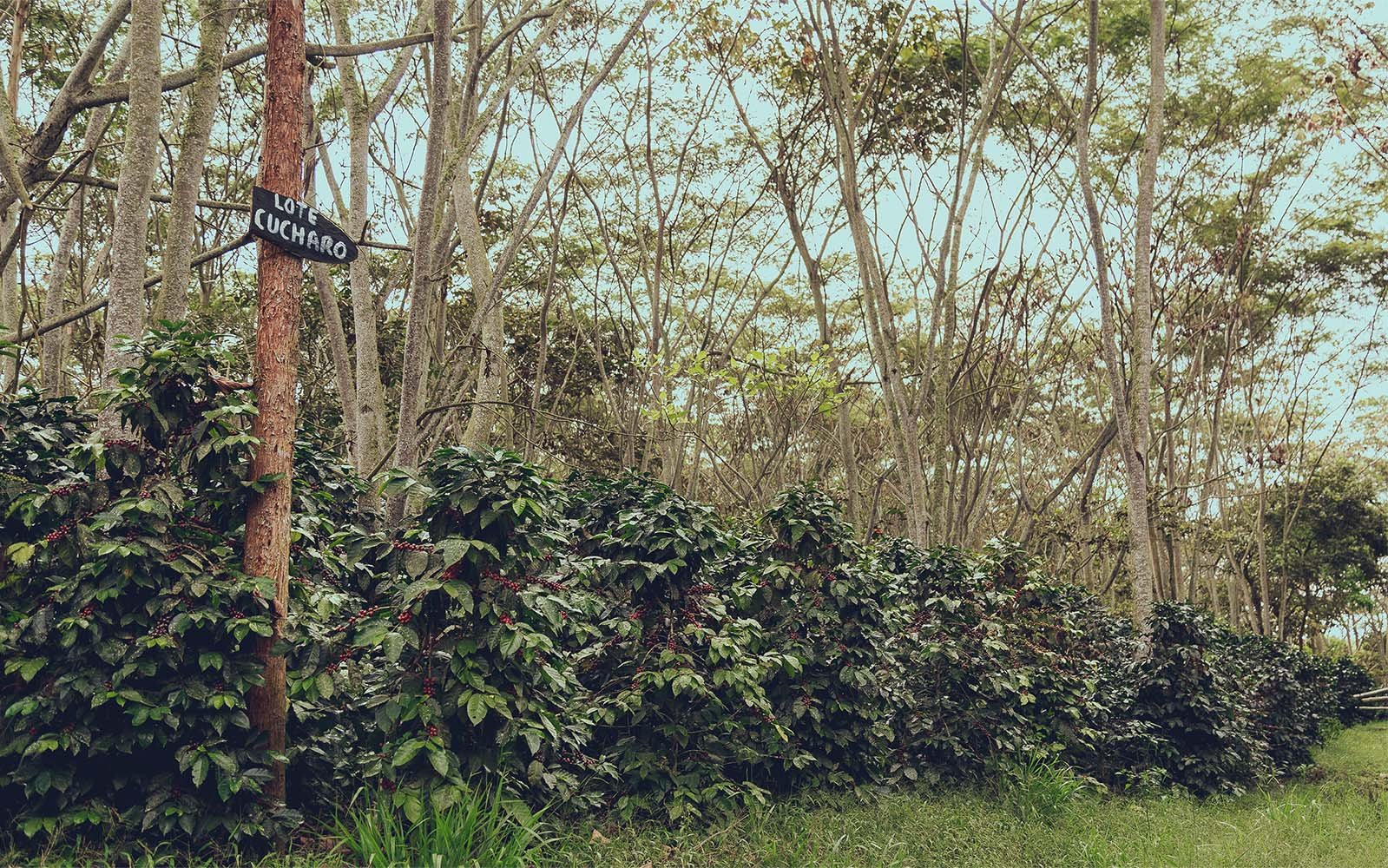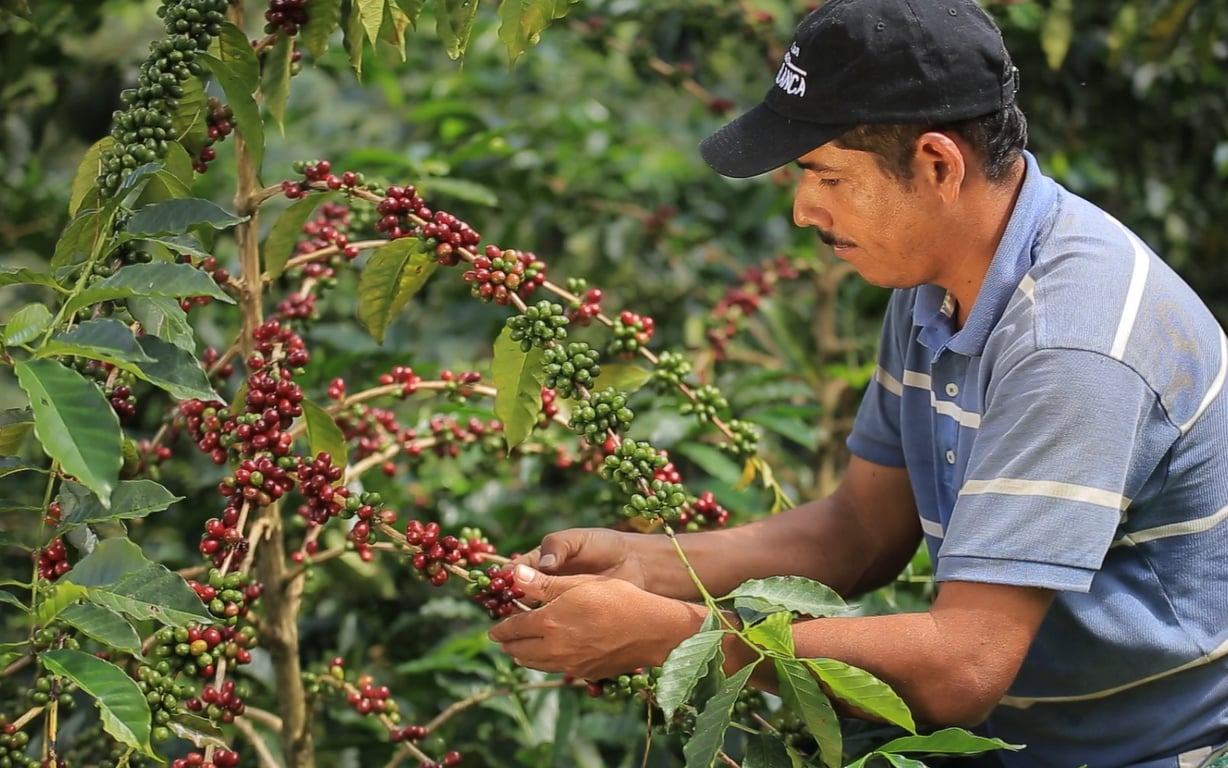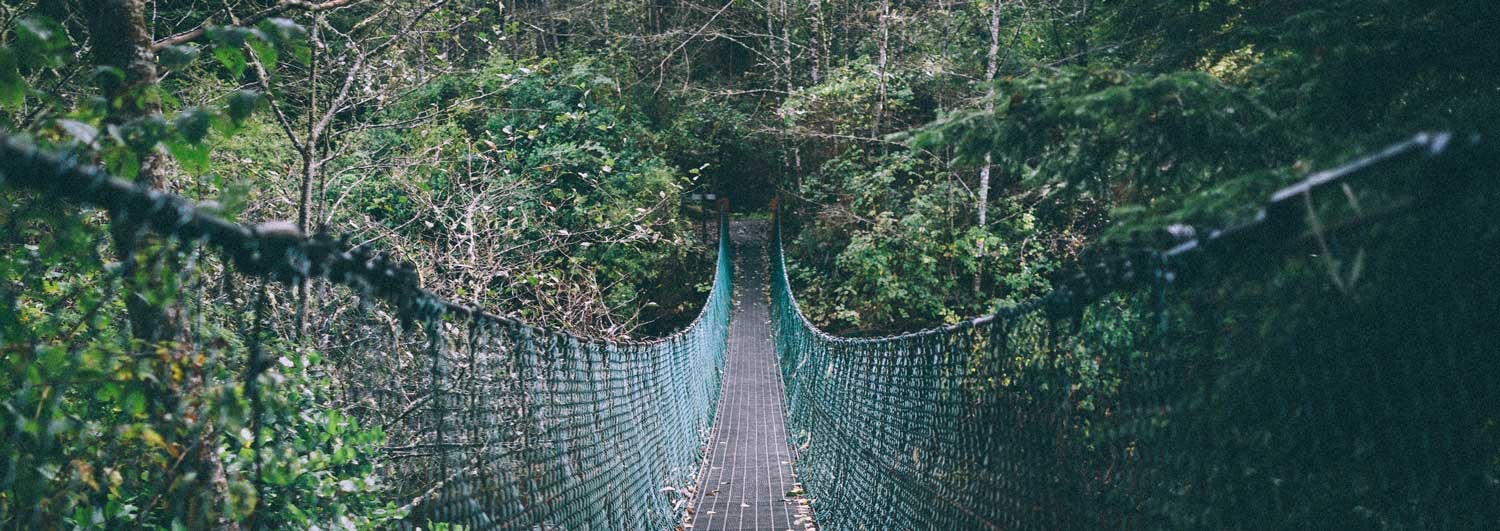The two regions Santander and Sierra Nevada in the North of Colombia will kickstart discoveries in 2020 with sales starting on January 13th. On offer, there will be mainly coffees from single farmers, one co-operative focused on organic production and an exotic lot from the Kogi, an indigenous group in the far North of the country that grows what they call “cafés silvestres” or wild coffees. We are meeting them for the first time in the coming weeks and can’t wait to get together around the cupping table!
 Closeness to the Equator and higher sun exposure means most of the coffees are shade grown (Photos: Chamber of Commerce, Santander)
Closeness to the Equator and higher sun exposure means most of the coffees are shade grown (Photos: Chamber of Commerce, Santander)
Why explore the Northern frontier?
Colombia is a strong producer of specialty coffee. Currently, up to 40% of the country’s exports are traded as specialty translating into better prices for growers. The country is also a big producer of certified coffees, especially Fairtrade and organic. However, only a fraction of these coffees are sold with a certification. In a market as dynamic as this, producers need to adapt and find new ways to sell their beans. This is especially true for Santander and Sierra Nevada as these two regions are still unknown to many roasters and overlooked when compared to the popular Huila and Nariño.
Traditionally, “these two departamientos don’t have as many competitive industry actors driving change and innovation. They are not well-known regions,” explains Carlos Arturo, a veteran technical consultant with 16 years of experience in the country. Things are changing, though. “We have started to hear about specialty coffee coming from these areas in the last 3 years,” he adds. Proof of that was seen during 2019’s Cup of Excellence, the first year a producer from Santander made it into the top 10, scoring 91 points. It was Oscar Bautista from Finca La Pradera, a farm that will be featured in the discoveries.
 Squeezed by the current low prices, growers have recently started investing in better processing
Squeezed by the current low prices, growers have recently started investing in better processing
Rich, bold and eco-friendly
Carlos was hired by both the Specialty Coffee Association in Sierra Nevada and the Chamber of Commerce in Santander to develop quality-focused projects, training farmers on techniques and processing methods aimed at improving the final quality of their coffees. According to him, “producers were used to selling parchment to local bodegas on the basis of the daily prices. There are cooperatives associated with the FNC (Federación Nacional de Cafeteros de Colombia) in charge of buying the coffees and typically physical parameters determine the price. There was no cupping. Cup profile was not related to the price.”
The fact Santander and Sierra Nevada have been investing in coffee is not only good for the local market but also an exciting opportunity for roasters. The coffees grown in these regions have a very different profile to the rest of the country. Here, they tend to be heavy on the sweet side (think panela), balanced and bolder in mouthfeel. Now that growers are investing in quality the coffee shows new potentials with rich fruit notes, stewed fruits, florals, herbs and more. The local coffee tradition is also environmentally conscious. Many farms avoid pesticides and around 80% of the coffee grows under the shade of trees.
 Unlike in the Southern regions, there is only one harvest in the North of Colombia
Unlike in the Southern regions, there is only one harvest in the North of Colombia
One rainy season and a lot of sunshine
The reason why the Northern coffees tend to be sweeter is that there is no “mitaca” (small harvest). A single rainy season (unlike in the South where there are two) means the harvest period is concentrated, starting in early November. “When you have two harvests the tree will be growing vegetatively with new leaves and branches at the same time it produces cherries. If the tree can focus on only one thing you get more ripe cherries and sweeter coffees,” says Carlos.
The sun is also a major factor determining the local coffee tradition. The number of sunny hours per day in the North is higher than the country's average. This is why the majority of the coffee is shade-grown and farms tend to have a lot of native tree species and biodiversity around the plantations. Carlos says caring for the environment is part of the North’s “vocation”. The pitiless sun made sure of that very early in Santander and farms in Sierra Nevada’s mountains have been largely influenced by the indigenous communities.
 One harvest period means the trees' energy is focused in maturing cherries
One harvest period means the trees' energy is focused in maturing cherries
Pioneers of the past, entrepreneurs of today
For the growers showcased in this Discovery, the goal is not only to put their farms on the map but also to change their region’s reputation. Juan Salazar, from the Chamber of Commerce in Santander, explains the district was one of the first in Colombia to grow coffee commercially, but it needs to regain protagonism. “We have 32,000 coffee-growing families spread around 50,000 hectares of cultivated land. We are working to improve our infrastructure to plant new varietals and experiment with fermentation processes to make our coffee shine! We aim to take the business of growing coffee to the next level,” he says.
The North Colombia Discoveries open in January in the spirit of opportunity, showing that the pioneers of the past have become the entrepreneurs of today - and they are braving European lands in search of new alliances. Roasters can learn more about them in the coming weeks as new blog posts about this sunny corner of the world will be shared, shining light on each farmer's story and their path in coffee. Click here to subscribe and be notified when it goes live!




Let Us Know What You Thought about this Post.
Put your Comment Below.